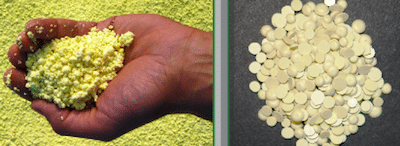
For growers who want to use elemental sulphur, fall is the time to apply it. Canola has a high demand for sulphur, but that sulphur has to be readily available for uptake. Elemental sulphur applied in the spring often does not oxidize at levels high enough to meet crop needs throughout the growing season. Elemental sulphur applied in the fall has more time to oxidize and more will be available when the crop needs it. Growers are reminded, however, that full conversion and availability to next year’s spring crop is not guaranteed. Some spring applied sulphate fertilizer may still be needed.
Growers who apply elemental sulphur in fall are encouraged to continue this practice on a regular basis as part of their sulphur fertilizer program. A history of elemental sulphur use builds up the oxidizing bacterial population, which will speed up the conversion to plant-usable sulphate.
Grey-wooded soils. Sulphur deficiencies are possible in any region, especially on fields with frequent canola rotations, but grey wooded soils tend to be the most responsive to sulphur fertilizer. And within those grey-soil fields, the knolls tend to be the most deficient. One fall management option is to target only the knoll-tops with an application of elemental sulphur. Banding may be needed to keep S from running down into low areas after spring overland runoff.
Do not work it in. Despite the mention of banding in the previous paragraph, the general recommendation is to broadcast elemental sulphur and leave it on the soil surface. Moisture and weathering will break down the prills faster, and speed the oxidization process.
Click here for a sulphur fertilizer factsheet from IPNI.